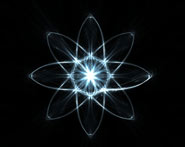


 الفيزياء الكلاسيكية
الفيزياء الكلاسيكية
 الكهربائية والمغناطيسية
الكهربائية والمغناطيسية
 علم البصريات
علم البصريات
 الفيزياء الحديثة
الفيزياء الحديثة
 النظرية النسبية
النظرية النسبية
 الفيزياء النووية
الفيزياء النووية
 فيزياء الحالة الصلبة
فيزياء الحالة الصلبة
 الليزر
الليزر
 علم الفلك
علم الفلك
 المجموعة الشمسية
المجموعة الشمسية
 الطاقة البديلة
الطاقة البديلة
 الفيزياء والعلوم الأخرى
الفيزياء والعلوم الأخرى
 مواضيع عامة في الفيزياء
مواضيع عامة في الفيزياء|
أقرأ أيضاً
التاريخ: 2024-05-17
التاريخ: 20-9-2020
التاريخ: 27-6-2016
التاريخ: 27-6-2016
|
It is obvious that this is a difficult subject, and we emphasize at the beginning that it is in fact an extremely difficult subject, and that we have to deal with it differently than we have dealt with the other subjects so far. In the case of mechanics and in the case of light, we were able to begin with a precise statement of some laws, like Newton’s laws, or the formula for the field produced by an accelerating charge, from which a whole host of phenomena could be essentially understood, and which would produce a basis for our understanding of mechanics and of light from that time on. That is, we may learn more later, but we do not learn different physics, we only learn better methods of mathematical analysis to deal with the situation.
We cannot use this approach effectively in studying the properties of matter. We can discuss matter only in a most elementary way; it is much too complicated a subject to analyze directly from its specific basic laws, which are none other than the laws of mechanics and electricity. But these are a bit too far away from the properties we wish to study; it takes too many steps to get from Newton’s laws to the properties of matter, and these steps are, in themselves, fairly complicated. We will now start to take some of these steps, but while many of our analyses will be quite accurate, they will eventually get less and less accurate. We will have only a rough understanding of the properties of matter.
One of the reasons that we have to perform the analysis so imperfectly is that the mathematics of it requires a deep understanding of the theory of probability; we are not going to want to know where every atom is actually moving, but rather, how many move here and there on the average, and what the odds are for different effects. So this subject involves a knowledge of the theory of probability, and our mathematics is not yet quite ready and we do not want to strain it too hard.
Secondly, and more important from a physical standpoint, the actual behavior of the atoms is not according to classical mechanics, but according to quantum mechanics, and a correct understanding of the subject cannot be attained until we understand quantum mechanics. Here, unlike the case of billiard balls and automobiles, the difference between the classical mechanical laws and the quantum-mechanical laws is very important and very significant, so that many things that we will deduce by classical physics will be fundamentally incorrect. Therefore, there will be certain things to be partially unlearned; however, we shall indicate in every case when a result is incorrect, so that we will know just where the “edges” are. One of the reasons for discussing quantum mechanics in the preceding chapters was to give an idea as to why, more or less, classical mechanics is incorrect in the various directions.
Why do we deal with the subject now at all? Why not wait half a year, or a year, until we know the mathematics of probability better, and we learn a little quantum mechanics, and then we can do it in a more fundamental way? The answer is that it is a difficult subject, and the best way to learn is to do it slowly! The first thing to do is to get some idea, more or less, of what ought to happen in different circumstances, and then, later, when we know the laws better, we will formulate them better.
Anyone who wants to analyze the properties of matter in a real problem might want to start by writing down the fundamental equations and then try to solve them mathematically. Although there are people who try to use such an approach, these people are the failures in this field; the real successes come to those who start from a physical point of view, people who have a rough idea where they are going and then begin by making the right kind of approximations, knowing what is big and what is small in a given complicated situation. These problems are so complicated that even an elementary understanding, although inaccurate and incomplete, is worthwhile having, and so the subject will be one that we shall go over again and again, each time with more and more accuracy, as we go through our course in physics.
Another reason for beginning the subject right now is that we have already used many of these ideas in, for example, chemistry, and we have even heard of some of them in high school. It is interesting to know the physical basis for these things.
As an interesting example, we all know that equal volumes of gases, at the same pressure and temperature, contain the same number of molecules. The law of multiple proportions, that when two gases combine in a chemical reaction the volumes needed always stand in simple integral proportions, was understood ultimately by Avogadro to mean that equal volumes have equal numbers of atoms. Now why do they have equal numbers of atoms? Can we deduce from Newton’s laws that the number of atoms should be equal? We shall address ourselves to that specific matter in this chapter. In succeeding chapters, we shall discuss various other phenomena involving pressures, volumes, temperature, and heat.
We shall also find that the subject can be attacked from a nonatomic point of view, and that there are many interrelationships of the properties of substances. For instance, when we compress something, it heats; if we heat it, it expands. There is a relationship between these two facts which can be deduced independently of the machinery underneath. This subject is called thermodynamics. The deepest understanding of thermodynamics comes, of course, from understanding the actual machinery underneath, and that is what we shall do: we shall take the atomic viewpoint from the beginning and use it to understand the various properties of matter and the laws of thermodynamics.



|
|
|
|
4 أسباب تجعلك تضيف الزنجبيل إلى طعامك.. تعرف عليها
|
|
|
|
|
|
|
أكبر محطة للطاقة الكهرومائية في بريطانيا تستعد للانطلاق
|
|
|
|
|
|
|
مشاتل الكفيل تزيّن مجمّع أبي الفضل العبّاس (عليه السلام) بالورد استعدادًا لحفل التخرج المركزي
|
|
|